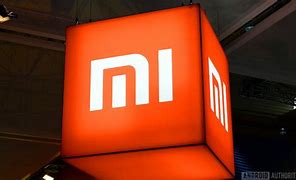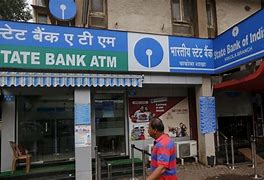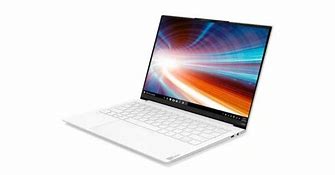Top News
Six Indians in Forbes 50 Asian power businesswomen list

New York: Six Indians, including State Bank of India chairman Arundhati Bhattacharyya and Biocon founder Kiran Mazumdar Shaw, figure in the Forbes’s 2015 list of Asia’s 50 Power Businesswomen showcasing a year of accomplishments by the region’s female entrepreneurs and executives.
Punctuated by the Midas touch of China’s Alibaba, the list also includes two rapidly growing economies.
To make the list, candidates have to be active in the upper echelons of the business world in Asia, wield significant power and have access to robust financial resources, according to Forbes.
Apart from Bhattacharya and Shaw, other Indians in the list are: Akhila Srinivasan, managing director of Shriram Life Insurance/Shriram Capital; Chanda Kochhar, managing director and CEO of ICICI Bank; Shika Sharma, managing director and CEO of Axis Bank; and Usha Sangwan, managing director of Life Insurance Corporation of India.
According to Forbes, Bhattacharya, 58, referred to as the first lady of Indian banking, chairs State Bank of India, “a behemoth with 225 million customers and assets of $300 billion”.
“Bhattacharya offers employees at SBI the option of a 2-year sabbatical to take care of children and parents.”
As for Shaw, 61, it said “India’s biotech queen built Biocon from a garage startup into India’s largest publicly traded biopharma firm, with $480 million in sales, mostly in low-cost drugs for diseases such as diabetes and cancer”.
It also mentioned that Shaw sits on the board of IT giant Infosys and chairs the board of governors of the Indian Institute of Management, Bangalore.
On Srinivasan, Forbes said she “catapulted Shriram Life Insurance into one of the top five private players in its industry in India in terms of profitability”.
“It went on a hiring spree last year, increasing the number of employees to 9,000 from 5,500. Total premiums collected have surged almost 17-fold in seven years to $695 million,” it stated.
Describing Kochhar, 53, as India’s second-most-powerful banker (after Arundhati Bhattacharya), Forbes said she has been boss of ICICI, the country’s biggest lender in the private sector, with assets of $100 billion, for six years.
“She has overseen a retail expansion into the rural heartland; more than 10 percent of ICICI’s 3,850 branches are in previously unbanked areas. Kochhar is now aiming at capturing younger customers with Pockets, a mobile and online service,” the magazine noted.
As for Axis Bank head Shikha Sharma, 56, it said she has been credited with giving the bank a retail focus, digitising transactions and expanding the network.
“Under her command the bank’s total deposits have grown to $46 billion as of December 31. Net profit crossed the $1 billion-mark for the first time in the year ended last March,” her profile read.
Usha Sangwan, Forbes said, made history two years ago when she became the first woman to occupy the post of managing director of LIC.
“She joined LIC in 1981 as a direct-recruit officer and worked her way up,” it said about the 56-year-old achiever.
In this year’s list, China’s Alibaba made history by becoming the first company to have to have two of its decision-makers making the grade: Maggie Wu, the online giant’s chief financial officer, and Lucy Peng, Alibaba’s co-founder.
For the first time, women from emerging economies Mongolia and Myanmar made it to the list.
While Garamjav Tseden is the founder and chairman of Mongolian mining company Monpolymet, Myanmar’s Win Win Tint “took the family grocery store and created a retail giant that spans supermarkets, convenience stores, pharmacies, book stores and more”.
The list also includes women achievers from Taiwan, Singapore, Indonesia and Australia.
Entertainment
Casino Days Reveal Internal Data on Most Popular Smartphones

International online casino Casino Days has published a report sharing their internal data on what types and brands of devices are used to play on the platform by users from the South Asian region.
Such aggregate data analyses allow the operator to optimise their website for the brands and models of devices people are actually using.
The insights gained through the research also help Casino Days tailor their services based on the better understanding of their clients and their needs.
Desktops and Tablets Lose the Battle vs Mobile
The primary data samples analysed by Casino Days reveal that mobile connections dominate the market in South Asia and are responsible for a whopping 96.6% of gaming sessions, while computers and tablets have negligible shares of 2.9% and 0.5% respectively.
The authors of the study point out that historically, playing online casino was exclusively done on computers, and attribute thе major shift to mobile that has unfolded over time to the wide spread of cheaper smartphones and mobile data plans in South Asia.
“Some of the reasons behind this massive difference in device type are affordability, technical advantages, as well as cheaper and more obtainable internet plans for mobiles than those for computers,” the researchers comment.
Xiaomi and Vivo Outperform Samsung, Apple Way Down in Rankings
Chinese brands Xiaomi and Vivo were used by 21.9% and 20.79% of Casino Days players from South Asia respectively, and together with the positioned in third place with a 18.1% share South Korean brand Samsung dominate the market among real money gamers in the region.
Cupertino, California-based Apple is way down in seventh with a user share of just 2.29%, overshadowed by Chinese brands Realme (11.43%), OPPO (11.23%), and OnePlus (4.07%).
Huawei is at the very bottom of the chart with a tiny share just below the single percent mark, trailing behind mobile devices by Motorola, Google, and Infinix.
The data on actual phone usage provided by Casino Days, even though limited to the gaming parts of the population of South Asia, paints a different picture from global statistics on smartphone shipments by vendors.
Apple and Samsung have been sharing the worldwide lead for over a decade, while current regional leader Xiaomi secured their third position globally just a couple of years ago.
Striking Android Dominance among South Asian Real Money Gaming Communities
The shifted market share patterns of the world’s top smartphone brands in South Asia observed by the Casino Days research paper reveal a striking dominance of Android devices at the expense of iOS-powered phones.
On the global level, Android enjoys a comfortable lead with a sizable 68.79% share which grows to nearly 79% when we look at the whole continent of Asia. The data on South Asian real money gaming communities suggests that Android’s dominance grows even higher and is north of the 90% mark.
Among the major factors behind these figures, the authors of the study point to the relative affordability of and greater availability of Android devices in the region, especially when manufactured locally in countries like India and Vietnam.
“And, with influencers and tech reviews putting emphasis on Android devices, the choice of mobile phone brand and OS becomes easy; Android has a much wider range of products and caters to the Asian online casino market in ways that Apple can’t due to technical limitations,” the researchers add.
The far better integration achieved by Google Pay compared to its counterpart Apple Pay has also played a crucial role in shaping the existing smartphone market trends.
Content provided by Adverloom

























